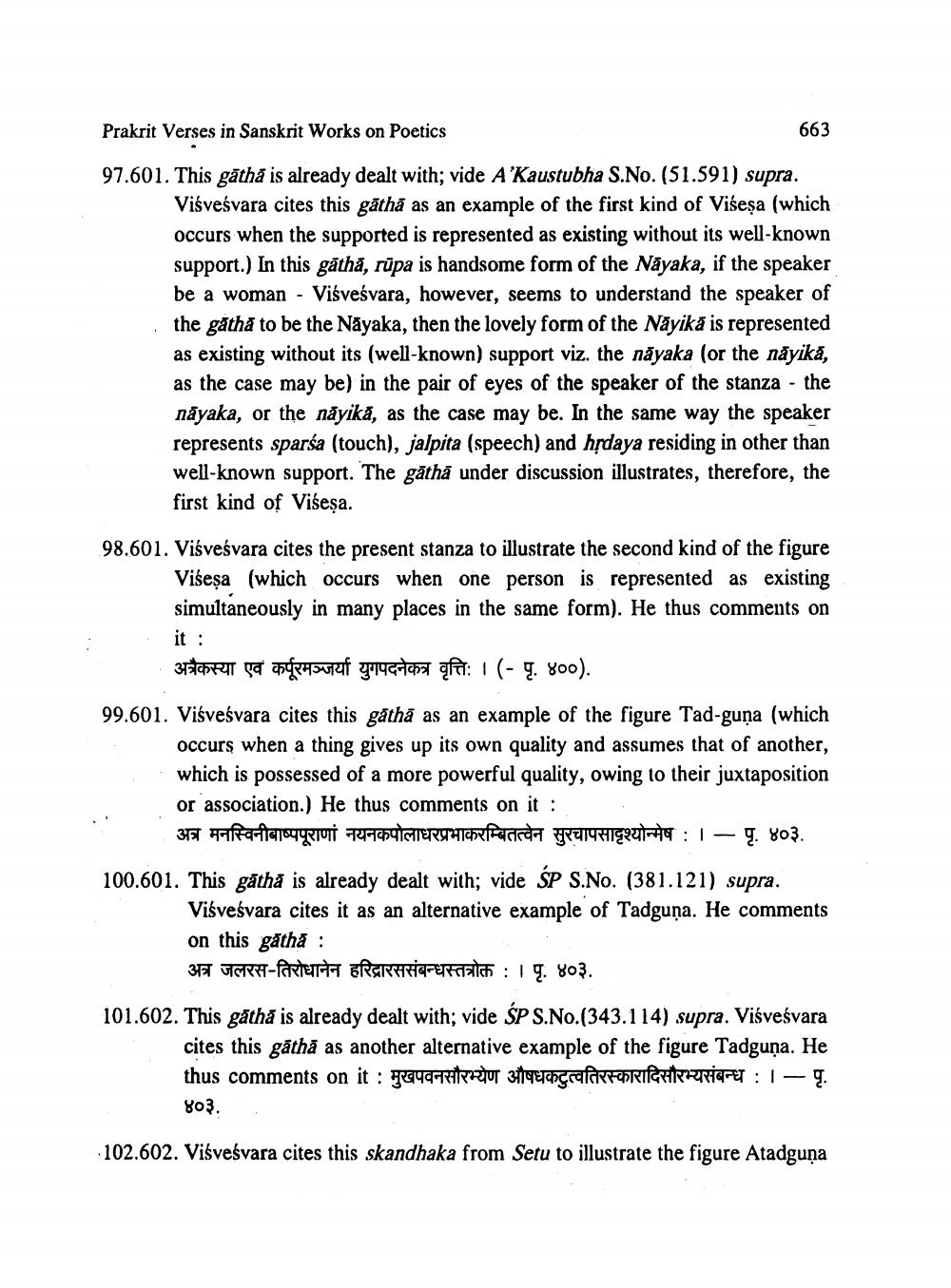________________
Prakrit Verses in Sanskrit Works on Poetics
663
97.601. This gātha is already dealt with; vide A'Kaustubha S.No. (51.591) supra.
Viśveśvara cites this gātha as an example of the first kind of Višeşa (which occurs when the supported is represented as existing without its well-known support.) In this gāthā, rūpa is handsome form of the Nayaka, if the speaker be a woman - Viśveśvara, however, seems to understand the speaker of the gatha to be the Nāyaka, then the lovely form of the Näyikā is represented as existing without its (well-known) support viz. the nayaka (or the nayika, as the case may be) in the pair of eyes of the speaker of the stanza - the nayaka, or the nãyika, as the case may be. In the same way the speaker represents sparsa (touch), jalpita (speech) and hrdaya residing in other than well-known support. The gātha under discussion illustrates, therefore, the first kind of Višesa.
98.601. Visveśvara cites the present stanza to illustrate the second kind of the figure
Višeşa (which occurs when one person is represented as existing simultaneously in many places in the same form). He thus comments on it :
torent gran noge sutuf y-146 tahu afa: 1 (- . 800).
99.601. Viśveśvara cites this gåthā as an example of the figure Tad-guņa (which
occurs when a thing gives up its own quality and assumes that of another, which is possessed of a more powerful quality, owing to their juxtaposition or association.) He thus comments on it :
अत्र मनस्विनीबाष्पपूराणां नयनकपोलाधरप्रभाकरम्बितत्वेन सुरचापसादृश्योन्मेष : | - पृ. ४०३. 100.601. This gātha is already dealt with; vide ŚP S.No. (381.121) supra.
Visveśvara cites it as an alternative example of Tadguņa. He comments on this gatha : अत्र जलरस-तिरोधानेन हरिद्रारससंबन्धस्तत्रोक्त : । पृ. ४०३.
101.602. This gātha is already dealt with; vide ŚP S.No.(343.114) supra. Viśveśvara
cites this gāthă as another alternative example of the figure Tadguņa. He thus comments on it: grauarratatu 319anccalderobrila TRRRİQAT: 1 - . 803.
102.602. Visvesvara cites this skandhaka from Setu to illustrate the figure Atadguņa




